Microeconomics Analysis: Singapore Airlines and Market Dynamics
VerifiedAdded on 2021/06/17
|5
|736
|75
Homework Assignment
AI Summary
This microeconomics assignment analyzes Singapore Airlines' (SIA) acquisition of the Boeing 787-10 and its implications within the airline industry. The paper argues that SIA operates under a natural monopoly due to high fixed costs. It then explains the concept of economies of scale, illustrating how SIA can reduce average costs by increasing passenger capacity with the new aircraft. The analysis further examines the relationship between ticket prices and demand within a monopoly market, highlighting how SIA can leverage lower costs to potentially increase passenger numbers and benefit from economies of scale. The assignment includes two figures to visually represent the economies of scale and their application in a monopoly market context, and it concludes by emphasizing the potential impact of pricing strategies on SIA's market position.
1 out of 5
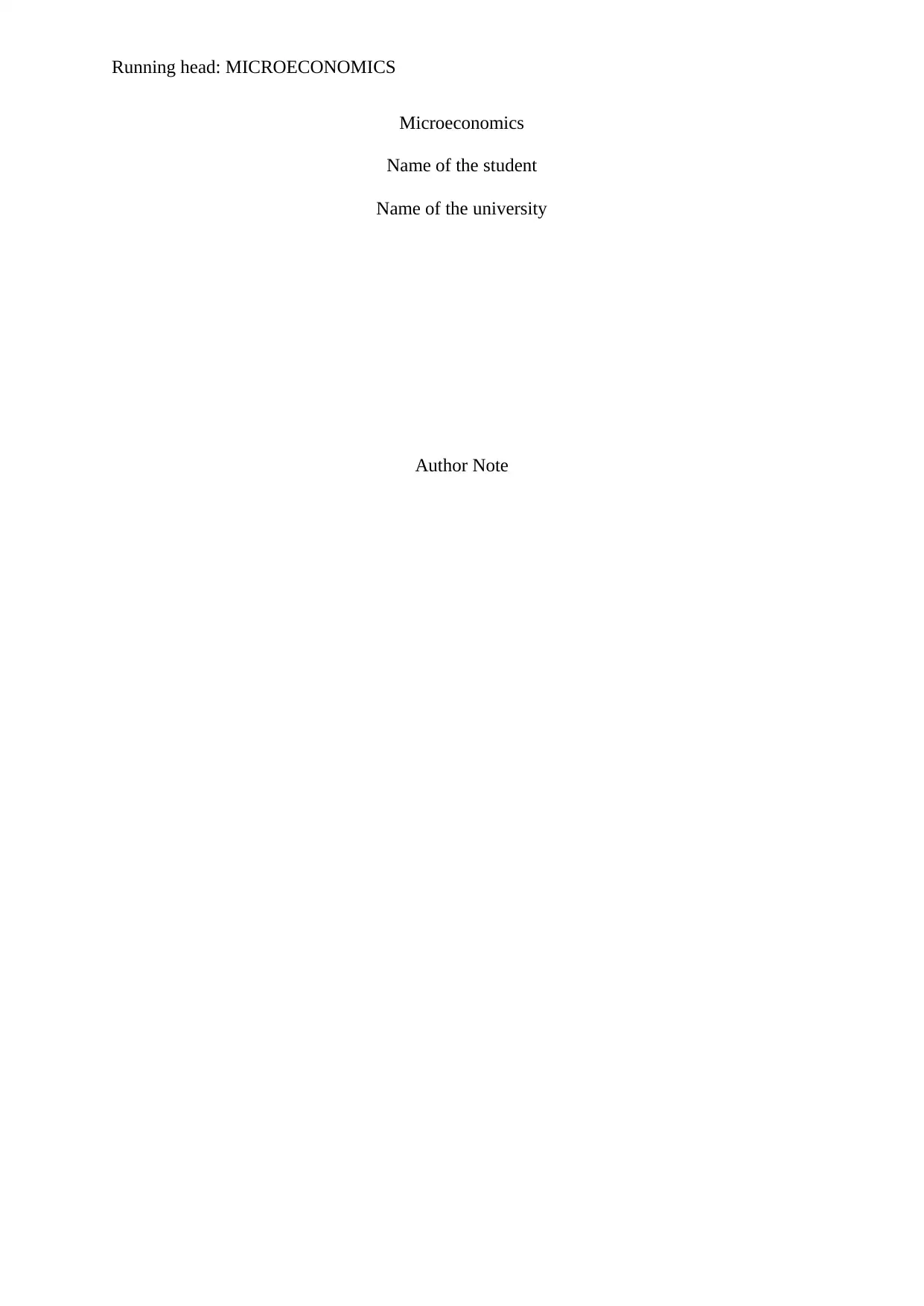
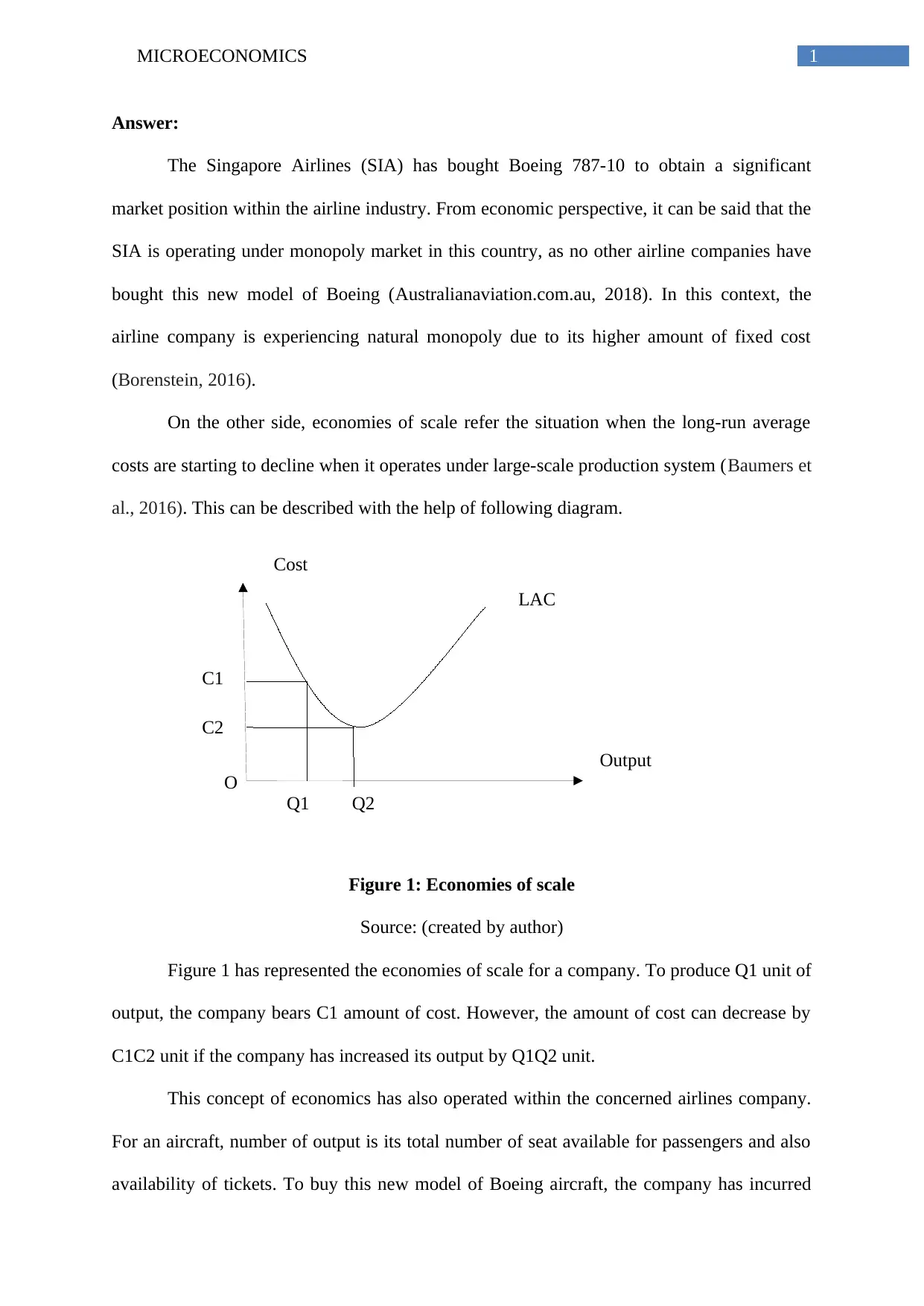
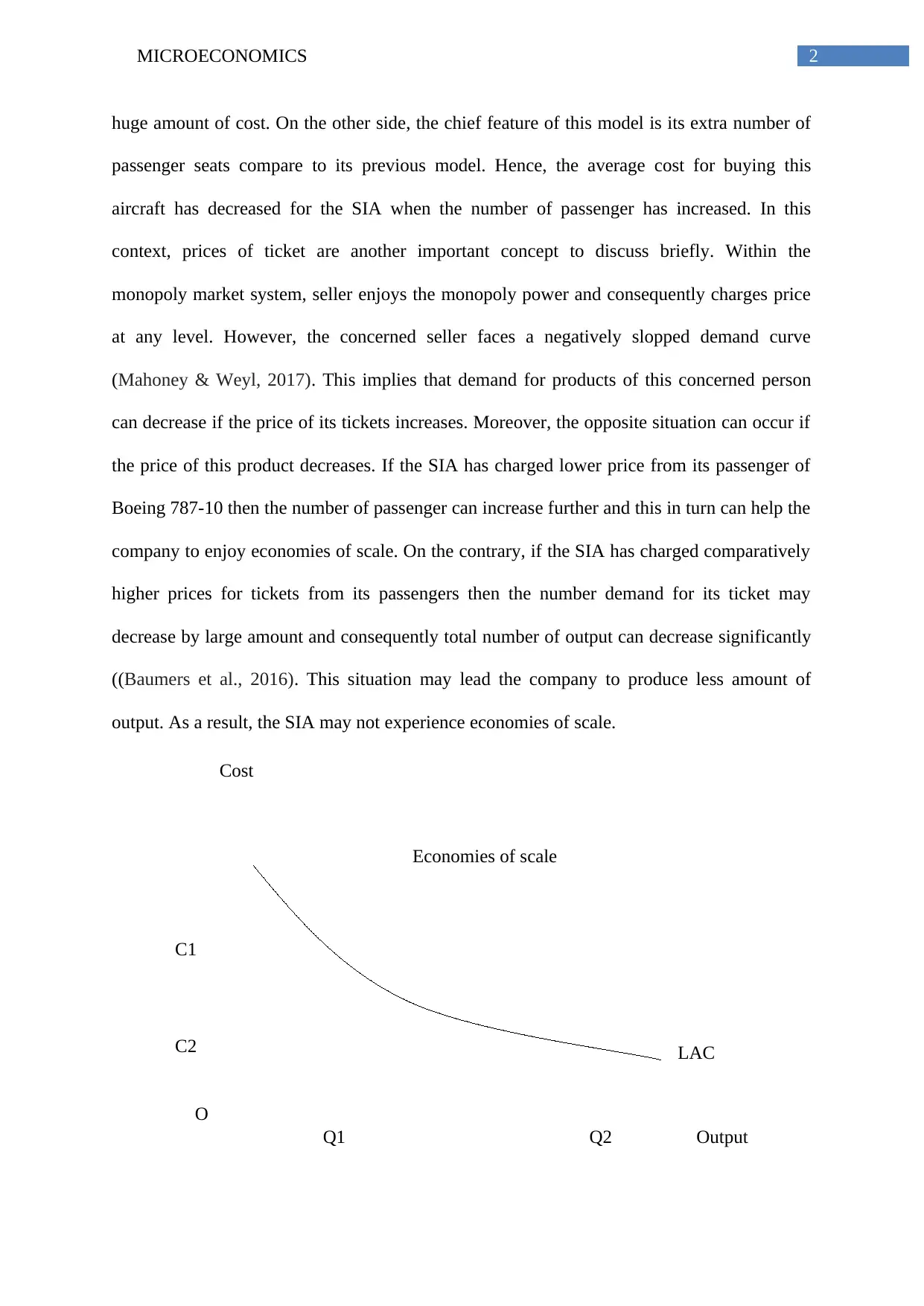

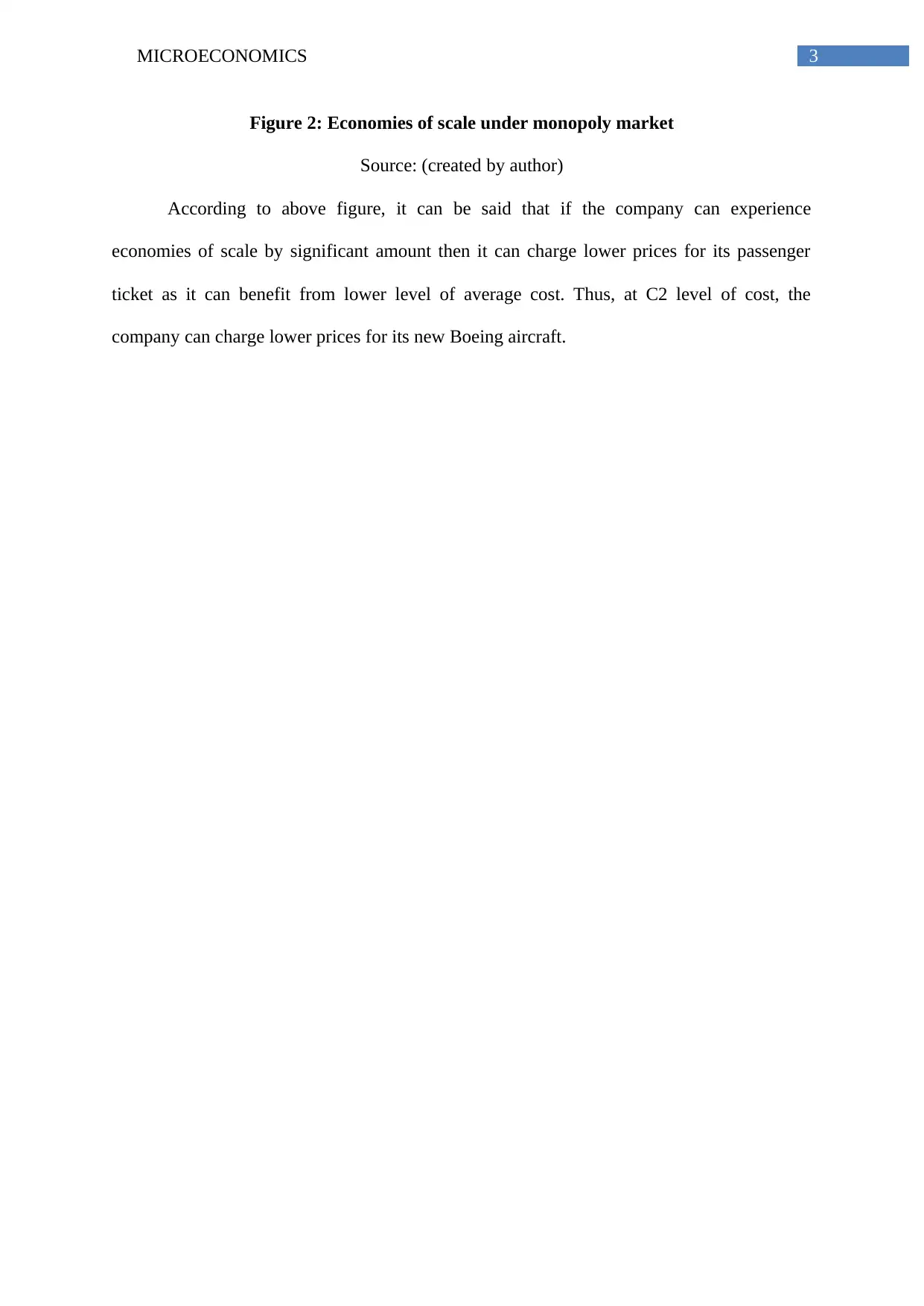
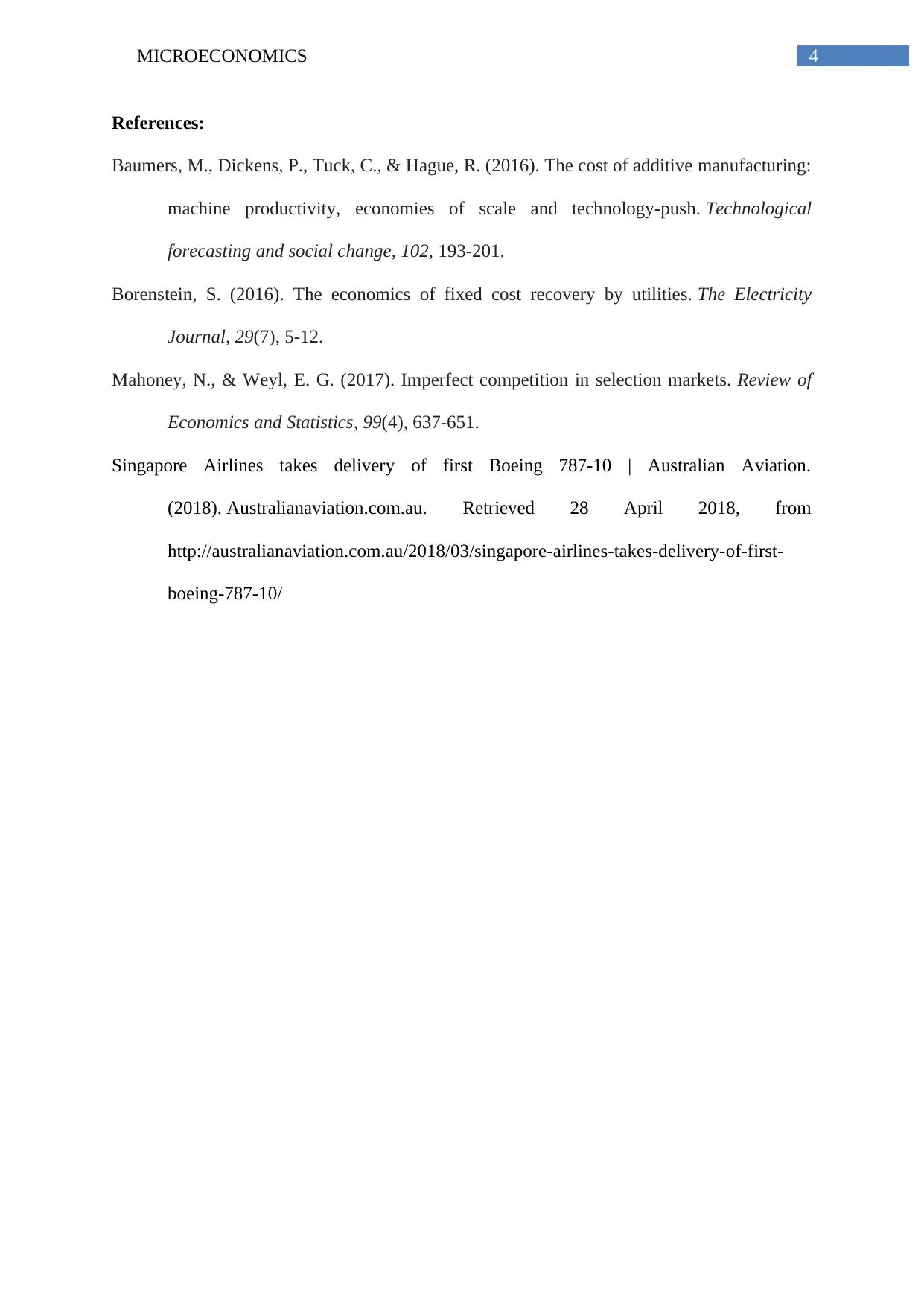






![[object Object]](/_next/static/media/star-bottom.7253800d.svg)